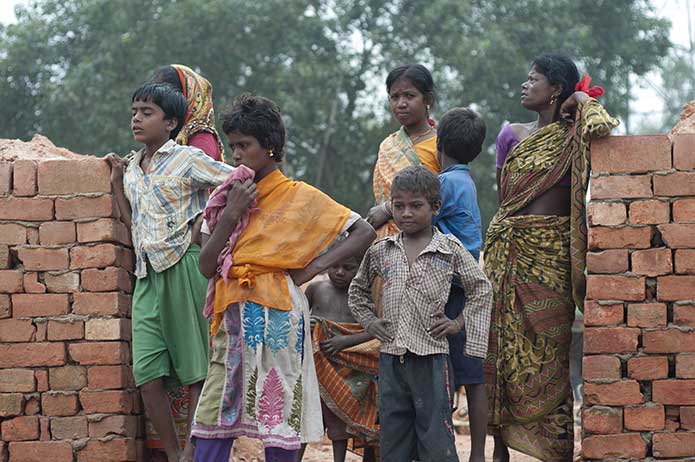Hindu society, which comprises most of India and Nepal, is stratified according to an ancient caste system. This is a 3000-year-old social structure in which heredity determines one’s place in society including what jobs one will perform and with whom one will associate. Upper castes own land and work in skilled careers while lower castes are typically landless and only allowed to perform menial jobs such as manual laborers.
Low castes are also very poorly treated by the upper castes. Dalits, the lowest caste, are treated as sub-human and generally shunned. They are not allowed to associate with upper castes, are made to feel inferior, and often physically or sexually assaulted. Dalits are often forbidden from using water wells of upper caste Hindus even if they don’t have a well for themselves. Dalit children are often bullied and physically segregated in schools, despite segregation being illegal. Not long ago, Dalits were not allowed to wear any footwear and the males were not allowed to wear shirts, even outdoors. Failure to meet this expectation of submission would result in a beating. Things are not much better for Dalits today, who number over 250 million.

Brick factory workers in India.
Caste was outlawed in India in 1950, however, it is still widely practiced. Laws are ill-enforced because the police are upper caste and Dalits cannot afford to bribe them. Casteism is one of the biggest issues in the world due to its scale and severity. It has probably been neglected internationally because it exists primarily in only two countries: India and Nepal. Being limited to one or two countries is not relevant, however, because it is a problem that affects hundreds of millions, and the fact that internal action has been poor. The tractability of casteism is low, but there has been slow, steady progress over the past 60 years. It will not progress well with regulations alone. There needs to be a large, sustained, grassroots movement. Being poor, Dalits and other low caste Indians could utilize financial support from abroad. The upper castes don’t support anti-casteism efforts because they benefit from the system, and sadly, don’t recognize the humanity of people of low caste.
 Relevance to Christians
Relevance to Christians
Christians believe in equality. Jesus taught to love others regardless of their place in society. Prejudice and oppression is antithetical to everything Christianity is about. Many low-caste Hindus are converting to other religions such as Christianity, Islam, and Buddhism to avoid casteism. Unfortunately, these people are still usually treated the same once they convert, even within the church, mosque, or temple.
 Opportunities for Effective Altruism
Opportunities for Effective Altruism
Very few nonprofits fight casteism, even among the nonprofits that include it in their mission. 99% of casteism is found in India, and NGOs in there are almost exclusively composed of people from upper castes. Some of the NGOs and leaders of the Dalit movement have been exposed as corrupt themselves. The road to redemption for low castes is unclear, but CEAS is open to suggestions for high impact anti-casteism work.
